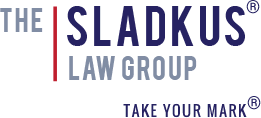The Trademark Modernization Act of 2020 Becomes Law
On December 27, 2020, the U.S. Trademark Modernization Act of 2020 (“TMA”) was signed into law. The TMA was developed in response to growing concerns over the number of federally registered trademarks that are not used in U.S. commerce, including fraudulent trademark registrations relying on doctored photos to demonstrate use of the mark. The TMA amends the U.S. Lanham Act (Trademark Act) in several significant ways.
First, the TMA establishes two new procedures for cancelling a trademark registration based on non-use of the mark. Current law provides that a third party can only request cancellation through the Trademark Trial and Appeal Board (“TTAB”) or in a lawsuit in district court. The new procedures allow the USPTO Director to review and process cancellation requests directly. These new procedures can be initiated by third parties or by the USPTO Director on his own initiative.
- The first new procedure provides for the expungement of trademark registrations for marks that have never been used in commerce in connection with some or all of the goods or services recited in the registration. The TMA also makes expungement (a mark having never been used) a ground for cancellation before the TTAB. Expungement proceedings can only be instituted between three and ten years after the registration date.
- The second new procedure provides for the reexamination of trademark registrations in which the applicant made improper use claims during the examination process prior to the mark’s registration in connection with some or all of the goods or services recited in the application. The proceedings must be initiated within the first five years after the registration date.
Second, the TMA codifies the existing practice of the USPTO to accept evidence offered by third parties during examination regarding grounds for refusing registration (letters of protest). Under the TMA, the USPTO Director will now have two months in which to review the evidence submitted in these letters of protest.
Third, the TMA provides the USPTO additional flexibility in setting Office Action response deadlines. Under the TMA, the USPTO now has the autonomy to establish response periods between 60 days and six months, so long as applicants can extend the time to respond up to the full six-month period.
Finally, the TMA confirms that a plaintiff seeking an injunction to remedy a trademark violation is entitled to a rebuttable presumption of irreparable harm. Previously, a circuit split had developed as to whether irreparable harm can be presumed when a trademark violation had been proven. The TMA clarifies that a rebuttable presumption of irreparable harm exists for trademark violations, given the consumer protection concerns that would occur otherwise.
The full TMA can be viewed here. A summary of the new procedures established by the TMA is provided on the USPTO’s website, here.
Please reach out to us with any questions, or for more information about the new law.




